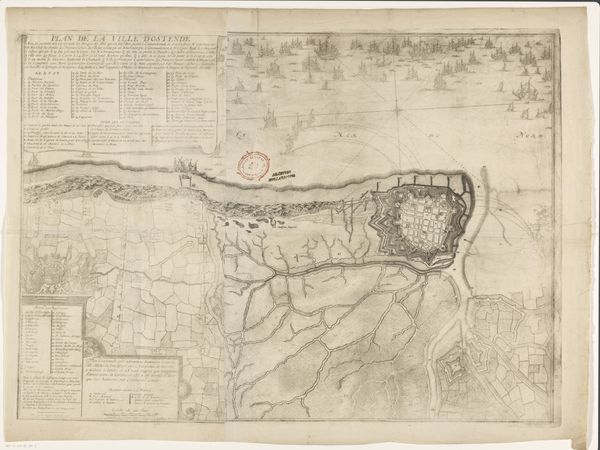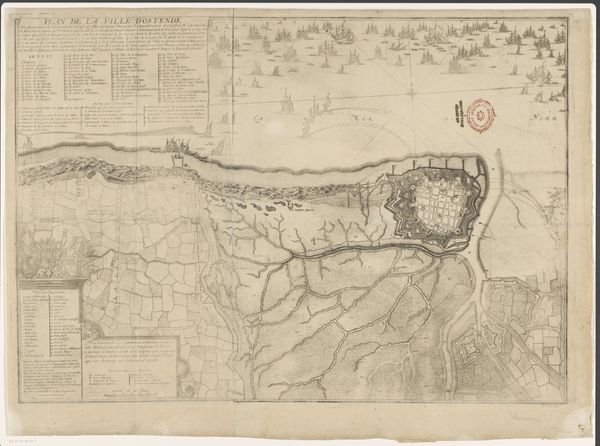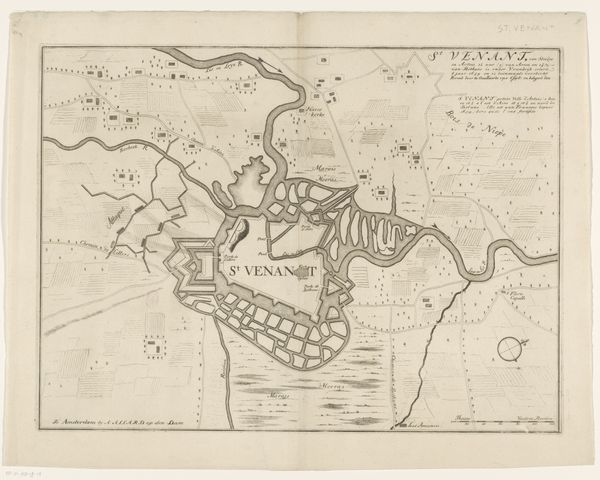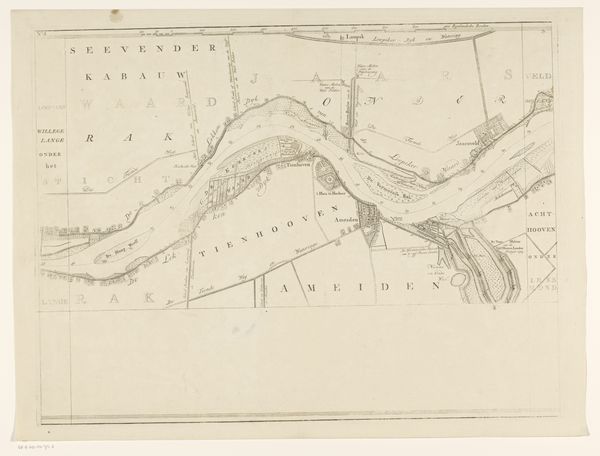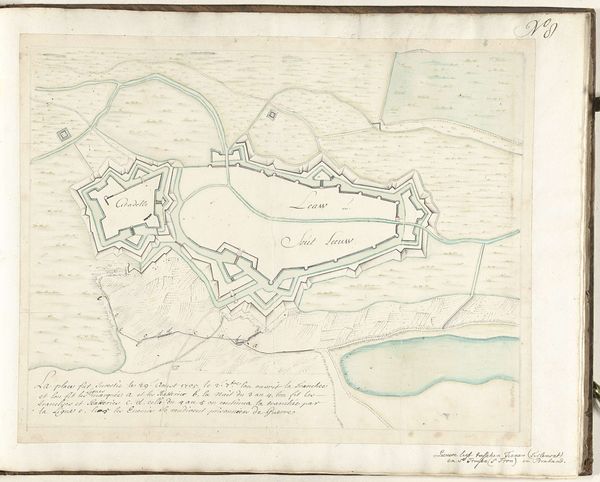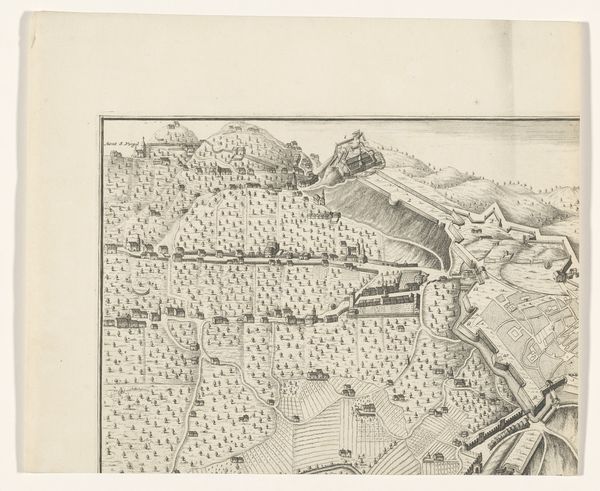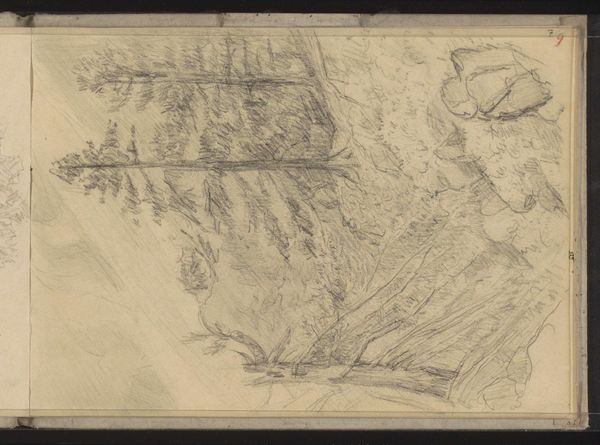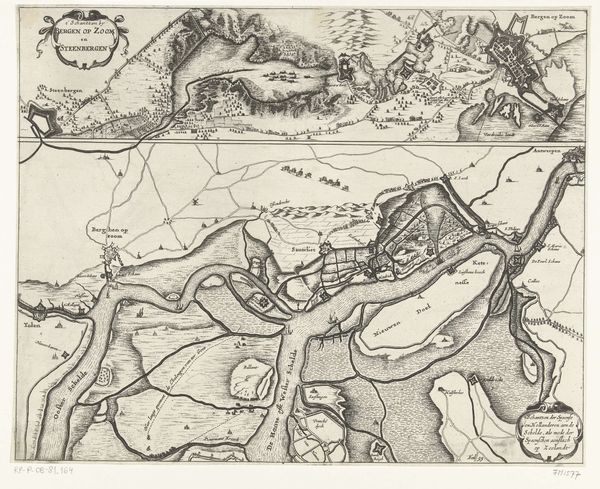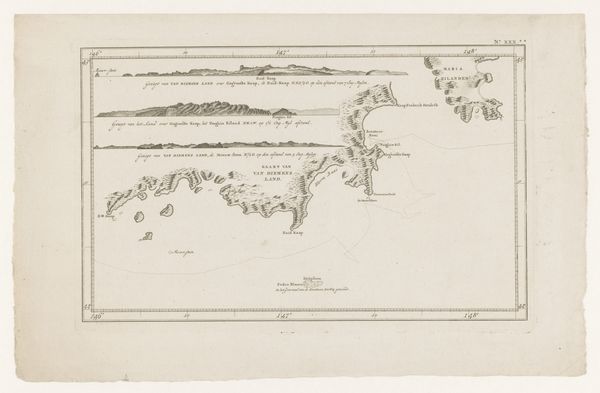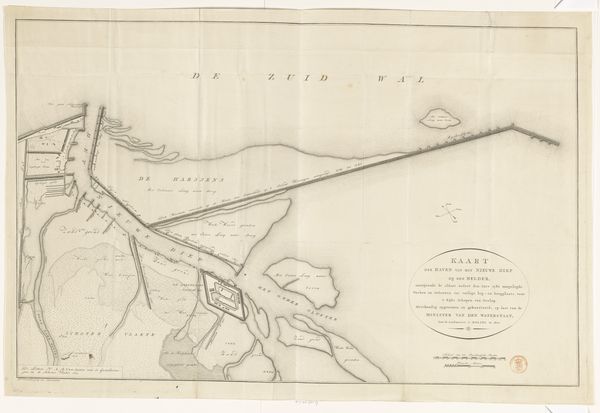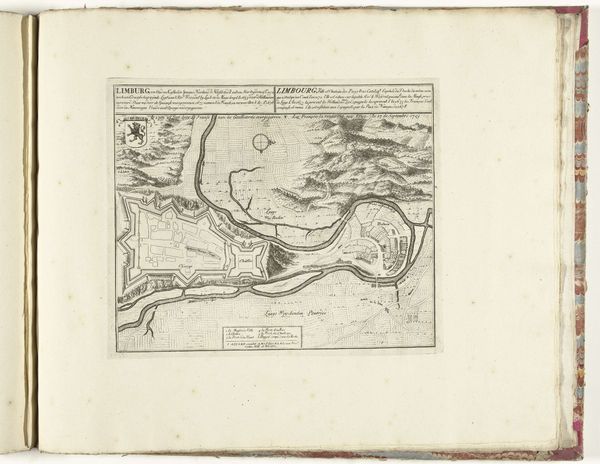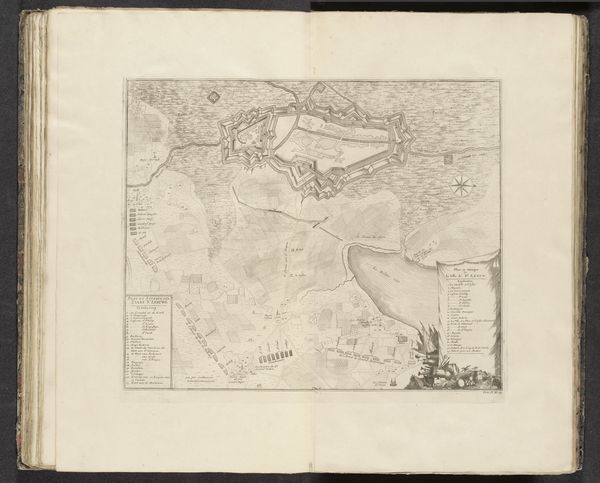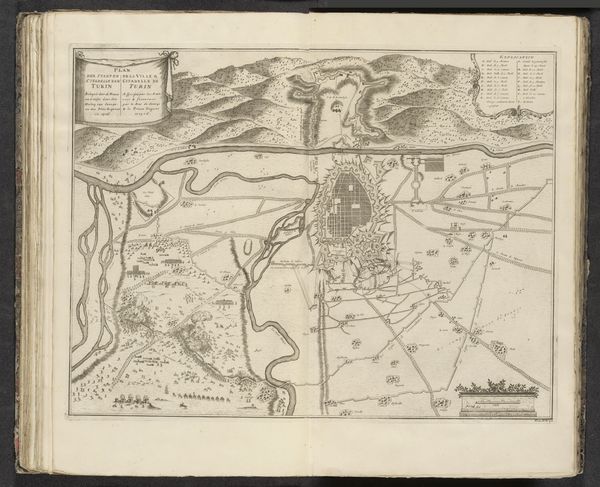
#
ink drawing
#
quirky sketch
#
pen sketch
#
incomplete sketchy
#
personal sketchbook
#
ink drawing experimentation
#
pen-ink sketch
#
pen work
#
sketchbook drawing
#
sketchbook art
Dimensions: height 530 mm, width 832 mm
Copyright: Rijks Museum: Open Domain
Curator: Here we have Jacobus Harrewijn’s "Beleg van Oostende, 1706," an ink drawing made in 1707, currently held at the Rijksmuseum. Editor: The first impression is of extraordinary detail, meticulously rendered. It reminds me of the intense focus required to map and contain a space so completely. There's an undeniable power dynamic embedded within that act of documentation. Curator: Indeed, the drawing represents the siege of Ostend, a strategically important port city, and the formal representation of it. This act reinforces power and control, situating the event within a narrative of domination. Maps, in this context, are never neutral; they embody a worldview, and contribute to shaping collective memory of specific communities or military campaigns. Editor: Looking at it purely from a formal perspective, notice the stark contrast between the geometric precision of the fortifications and the somewhat softer, more organic lines used to depict the surrounding landscape. The stark lines seem to say that "Man Conquers Nature," right? Curator: Certainly. That visual dichotomy reflects the historical power struggle. The rigid fortifications symbolize the military's imposition upon the natural landscape, mirroring the broader colonial impulse to control and subdue territory and the people in it. Editor: The consistent use of line, repeated again and again, structures not only the depicted space but also our reading of the image. It invites a rigorous semiotic examination. Do you think the somewhat frantic and incomplete lines in the sketches represent any feelings towards the artist's representation of an incomplete victory for all the people living within the war campaign area? Curator: Well, it could. It allows space for the viewer's understanding and representation, rather than imposing an ideal. Those seemingly minor "deficiencies" could even be read as a form of resistance to complete narrative control or cultural norms. Harrewijn is, subtly, offering a space for alternate perspectives, including how a siege impacts different racial or ethnic people, how gender impacts access to community supplies during conflict. It's an oblique, but significant move. Editor: I see your point. It adds an unexpected layer of complexity. Considering this piece now, it really has moved past what I first saw when only understanding through structure, into being a rich image embedded with complex social meaning. Curator: Absolutely. Recognizing the interplay between form and context gives us a far more complete picture.
Comments
No comments
Be the first to comment and join the conversation on the ultimate creative platform.
